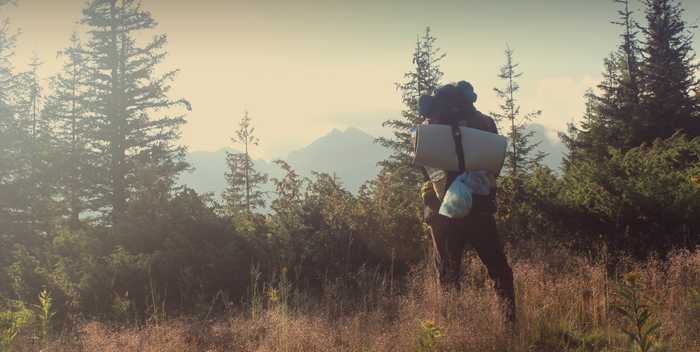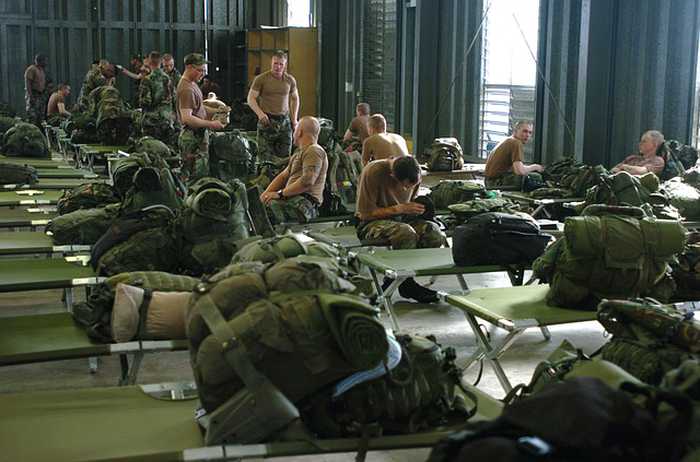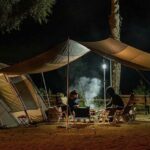When it comes to choosing a sleeping bag for hiking, you’ll want to consider both the shape and the materials. Semi-rectangular and mummy-shaped bags are usually best, since they’re more form-fitting and have built-in hoods that help maximize heat retention. As far as materials go, look for a shell and lining that are designed specifically for winter use; this will help ensure that you stay warm even on the coldest nights.
How do I choose a backpacking sleeping bag?
When it comes to choosing a backpacking sleeping bag, temperature rating is key. You want to choose a bag with a lower temperature rating than the lowest temperature you expect to encounter on your trip. This way, you’ll be prepared for any weather conditions that might arise. If you’re unsure about what temperatures you’ll encounter, err on the side of caution and choose a bag with a lower temperature rating. That way, you can always open up the bag if it gets too warm.
Should I bring a sleeping bag backpacking?
No, you don’t need a sleeping bag for camping, but it may be the best option depending on what kind of camping you are doing. Under most camping situations, you need some sort of insulation to keep you warm at night, but how you go about doing that will be influenced by a lot of factors.
For example, if you’re car camping in the summertime, chances are good that the temperature will be warm enough that you won’t need a sleeping bag. You could just bring along a blanket or some other form of bedding and be fine.
However, if you’re backpacking in the mountains in the middle of summer, a sleeping bag might be your best bet because nights can get pretty cold up there even when it’s hot during the day.
It really depends on what kind of camping situation you’re going to be in as to whether or not a sleeping bag is necessary. If weight and space are concerns (as they often are when backpacking), then maybe consider using a lighter quilt instead of a full-fledged sleeping bag.
How many types of sleeping bags are there?
There are three types of sleeping bags: summer, three-season, and winter. Summer bags are suitable for temperatures of about 30°F and higher. They’re lightweight (because less insulation means less weight), and they pack down tiny (often as small as a cantaloupe).
Three-season bags are good for spring, summer, and fall camping trips. They have more insulation than summer bags, so they’re a bit heavier and don’t pack down quite as small. Winter bags are designed for use in cold weather, with temperatures below freezing. They have the most insulation of all the types of sleeping bags, so they’re heaviest and take up the most space when packed.
What are the three types of sleeping bags?
There are three main types of sleeping bags: summer, three-season, and winter. Summer bags are designed for use in temperatures of 30°F and above. They’re usually lightweight and can be packed down to a small size. Three-season bags are suitable for use in spring, summer, and fall.
They typically have more insulation than summer bags, making them ideal for cooler weather. Winter bags are designed for use in cold weather, with some models rated for temperatures as low as -30°F. They typically have the most insulation of any type of sleeping bag, making them ideal for use in extreme conditions.
What are the 4 types of sleeping bags?
There are four main types of sleeping bags: rectangular, barrel-shaped, mummy, and double. Rectangular sleeping bags are the most common type. They’re roomy and can be zipped together to form a queen-sized bed. Barrel-shaped sleeping bags are great for camping in warm weather.
They’re lightweight and often have ventilation panels to help keep you cool. Mummy sleeping bags are tapered at the bottom and fitted at the top, so they’re very warm but can feel constricting. Double sleeping bags are designed for two people and usually have separate zippers so you can open them up like a blanket.
Quilts are another option for camping in warmer weather. They’re essentially blankets with straps that allow you to attach them to your sleep mat or Sleeping Pad Liner. Elephant’s foot sleeping bags are a newer style of bag that’s shaped like an elephant’s foot (hence the name). They offer more warmth than traditional mummy bags without feeling as constrictive, making them a good option for colder weather camping.

Should I bring a sleeping pad backpacking?
If you’re planning a backpacking trip, you might be wondering if you need to bring a sleeping pad. The answer is yes, it’s highly recommended that you take a sleeping pad with you on your trip. Here’s why:
Sleeping pads provide extra comfort for when you are curled up at night. They also help to insulate you from the ground, which can be cold and uncomfortable to sleep on without some kind of barrier. In short, a sleeping pad will make your backpacking trip much more enjoyable and comfortable.
What sleeping bag should I use for backpacking?
There are a few things to consider when choosing a sleeping bag for backpacking. The first is weight. You want a bag that is light enough to carry easily, but also warm enough for the conditions you’ll be facing. The second is fill. Down feathers are the lightest and most packable option, but they’re also more expensive. Synthetic fill is heavier but cheaper, and it still insulates well even if it gets wet. Finally, consider the temperature rating of the bag. Make sure it will be warm enough for the climate you’ll be in.
Assuming you’re looking for the lightest possible option, the Western Mountaineering Flylite sleeping bag would be your best choice. It’s filled with 850-fill down, which is very lightweight and compressible. However, it’s also one of the more expensive options on this list. If you’re willing to sacrifice some weight for a lower price point, the Kelty Cosmic 20 or REI Co-op Magma 15 would be good choices; both are filled with synthetic insulation that will keep you warm even if it gets wet.
What is a good weight for a backpacking sleeping bag?
A good weight for a backpacking sleeping bag depends on a few factors, such as the type of terrain you’ll be hiking in and the weather conditions you’re likely to encounter. For example, if you’re planning to hike in mountainous territory, a lighter bag will be easier to carry than a heavier one. Likewise, if you’re expecting cold weather, a warmer bag will be more comfortable than a lighter one.
That said, there are some general guidelines you can follow when choosing a backpacking sleeping bag. Ideally, your bag should weigh 2-3 pounds or less. If you’re carrying other gear (such as a tent), your whole system should ideally weigh 4 pounds or less.
How do I choose a hiking sleeping bag?
There’s a lot to consider when choosing the right backpacking sleeping bag. But if you keep a few key things in mind, it’ll be much easier to find the perfect one for your needs.
First, think about the temperatures you’ll be camping in. Sleeping bags are rated by their comfort level, which is the temperature at which they’ll keep you warm. So, if you’re planning on camping in cold weather, you’ll need a bag with a low comfort level. Conversely, if you’re only hiking in milder conditions, you can get away with a bag that has a higher comfort level.
Second, consider how much weight and space your sleeping bag will take up. Backpacking sleeping bags are designed to be lightweight and compressible so they don’t take up too much room in your pack. But this also means they may not be as warm as thicker and heavier bags. So again, it’s important to balance warmth with weight and space when choosing a backpacking sleeping bag.
Finally, think about what features you need or want in a sleeping bag. Some come with features like zippered compartments for storing gear or built-in pillows for added comfort.
What kind of sleeping bag are best for hiking?
There are a few things to consider when choosing the best sleeping bag for hiking. First, you’ll need to decide what temperature range you need the bag to be effective in. Second, you’ll need to decide how much weight and space you’re willing to sacrifice for warmth. Third, you should consider the features that are important to you, such as a hood or draft collar.
Here are some of the best sleeping bags for hiking, based on those criteria:
Enlightened Equipment Revelation Quilt 10°: This quilt is great for warm weather camping and backpacking. It’s ultralightweight and packable, making it ideal for long hikes.
Feathered Friends Egret UL 20° & Swallow UL 20°: These bags are great for cold weather camping and backpacking. They’re both ultralightweight and packable, making them ideal for long hikes. Kelty Cosmic Down 20°: This bag is great for cold weather camping and backpacking. It’s ultralightweight and packable, making it ideal for long hikes. REI Joule 21 & Igneo 17.: These bags are great all-around bags that can be used in a variety of conditions.
Whats a good weight for a sleeping bag?
When it comes to choosing a sleeping bag, one of the most important considerations is weight. After all, you don’t want to be lugging around a heavy bag when you’re trying to enjoy the great outdoors.
So, what’s a good weight for a sleeping bag? Generally speaking, you should try to get the lightest sleeping bag you can afford while still keeping it warm enough to sleep comfortably. Low denier shell fabrics and high fill power down will get you the greatest weight savings and best compressibility, but they come at a premium price. As such, try to shoot for a sleeping bag weight of 2 lbs or less.
What are the types of sleeping bags?
Sleeping bags come in three basic types: summer, three-season, and winter. Summer sleeping bags are designed for use in warm weather. Three-season sleeping bags are suitable for use in spring, summer, and fall.
Winter sleeping bags are intended for use in cold weather. Sleeping bags can be filled with down or synthetic material. Down sleeping bags are made with feathers from ducks or geese. Synthetic sleeping bags are made with man-made fibers such as polyester fiberfill.
Mummy sleeping bags hug the body closely to conserve heat. A rectangular sleeping bag do not hug the body but can be opened up and used like a blanket. Semi-rectangularsleeping bag have a tapered cut that helps them fit snugly around the body while still providing some room to move around inside the bag.
How do you know what sleeping bag to get?
There’s a lot to consider when choosing a sleeping bag. But if you keep a few key things in mind, it’ll be easier to find the right one for you.
First, think about the temperature range you’ll be using the bag in. This will help you decide on the type of insulation and materials you need. Second, consider how much weight and space you’re willing to sacrifice for warmth and comfort. Finally, factor in your budget.
Once you’ve considered these factors, it’ll be easier to narrow down your options and find the perfect sleeping bag for your needs.





